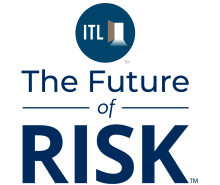The digitization of the insurance submission, quoting, and claims processes is prevalent in personal insurance, but commercial capabilities have been slower to adopt due to the complexity of the risks and the data required for underwriting. Those who master the complexities and transform these processes will be cracking the code for faster growth in the highly competitive commercial lines of insurance.
There is growing demand in the market from both retail and wholesale brokers for streamlined interactions with carriers that result in timely and accurate quotes, policies issued, and claims settled. In response, large P&C carriers such as Nationwide, Markel, and Arch Insurance have adopted digital capabilities wherein a user can upload unstructured documents to pre-populate a complex submission, generate a quote on flow business, or adjudicate a claim in a matter of seconds. In markets where speed matters, such as the excess and surplus (E&S) market, this capability can be a differentiator and give competitive advantage to carriers that prioritize data ingestion.
Taking the approach of automating the process for ingesting data has gained traction in the commercial insurance industry. It is deemed a keystone capability for carriers' and brokers' paths in their digital evolution. Additionally, as GenAI capabilities are increasingly being developed to assist underwriters and claims adjusters in their assessment of risks and claims, the breadth and accuracy of data ingested will have a strong correlation with the efficacy of the GenAI tool and become increasingly valuable.
Understanding Data Ingestion: Challenges
Data ingestion refers to the process of extracting, validating, curating, and processing data from various third-party sources into a system of record or centralized data repositories/data lakes. In the context of the insurance industry, where massive amounts of data are generated daily, the manual handling of such a task can be overwhelming, error-prone, and time-consuming. This data can span an array of use cases from risk assessment, quoting and issuing insurance policies, to filing/settling claims, or even booking premium from insurance policies that have been delegated to third parties.
The insurance industry has had challenges getting to this level, starting with the diversity of data types, including structured and unstructured data from sources such as policy documents, bordereaux forms, claims forms, and insured statement of values.
- Structured data typically refers to system/database data that is organized in a specific and predefined manner, typically following a schema or a data model, or "semi-structured" document formats such as CSV, JSON, or XML. Structures and definitions are typically pre-determined between the two parties exchanging the data for ease of processing.
- Unstructured data can take the form of emails (e.g. broker submission), Word/PDF documents (insured statement of values), images (e.g., car collision), financial documents (e.g., delegated premium), etc. and pose a greater challenge for organizing, processing, and synthesizing meaningful insights. New technologies are making it easier to unlock the potential within this enormous trove of untapped insights.
The sheer volume of data generated in the insurance sector is staggering—efficiently handling and processing this data is a daunting task, burdening staff whose time would be better spent on other activities. Additionally, getting to sufficient data velocity is an issue, as real-time data processing and speed to market are crucial to driving premium for commercial insurers. Processing claims in a timely manner can affect client retention and revenue from recurring business. Finally, ensuring data quality— the accuracy and reliability of data—is paramount for optimizing commercial insurers' portfolios and protecting their bottom line. Manual data entry, which even some major carriers still practice, is error-prone and can lead to inaccurate insights and decisions. Automating this process can address key challenges by streamlining the collection and integration of data from diverse sources.
Digital Maturity and the Advantages of Automated Data Ingestion
The digital maturity for deploying a data ingestion solution in the insurance industry typically progresses through several stages as the organization evolves its operational and IT capabilities. These include ad hoc data ingestion, basic automation, standardization and optimization, real-time data ingestion, advanced analytics, AI integration, and predictive and descriptive analytics.
A cornerstone capability to build into each of these ingestion maturity phases is natural language processing (NLP). NLP plays a critical role in data ingestion by helping to extract, understand, and process unstructured textual data. In the commercial insurance industry, NLP enables policy/claims document parsing, analyzing exposure documents for underwriting assessment, fraud detection, and more.
In the final stage of digital maturity, the organization is able to leverage fully ingested, curated, and enriched data, not only for descriptive and diagnostic analytics but also for predictive and prescriptive purposes. Advanced machine learning models can be trained on ingested data to forecast trends, identify potential errors or risks, and recommend optimal remediation actions. Eventually, the data ingestion approach becomes an integral part of the organization's decision-making process, driving business growth and profitability and lowering expenses.
Different insurance carriers, brokers, and intermediaries are at different stages of this data ingestion maturity curve, and some insurtechs provide unique capabilities to achieve such maturity. As these capabilities eventually come to be a necessary part of effective business practices, it is imperative for commercial insurers to make investment decisions to remain competitive in the marketplace.
Automated data ingestion solutions bring a number of advantages to the insurance industry and is a necessary prerequisite for the broad set of data needed for GenAI capabilities in the future. Having a "generative assistant capability" requires that an insurer can ingest the appropriate data and feed it into that capability.
Other benefits in the here-and-now include time-saving efficiencies that allow underwriters, operations, and claims professionals to focus on higher-value tasks; greater accuracy and reducing the risk of human error; and real-time processing that allows for up-to-the-minute insights for better decision-making, fraud detection, and customer service. In terms of adoption, automated data ingestion solutions can seamlessly integrate data from a variety of sources, including legacy systems, external databases, and IoT devices.
Once the foundation of a data ingestion tool is established, insurance organizations can scale this solution across their various geographies and product offerings, particularly in high-volume insurance programs. As the volume of data grows, machine learning kicks in to make automated solutions more robust and able to handle the increased data loads, ensuring that insurers can adapt to changing business requirements.
The sustained success of deploying an automated data ingestions solution is limited in the absence of data governance. Data governance is a vital protocol for enabling data consistency, accessibility, quality, and flow through the organization, while also delivering compliance for industries like insurance. In the context of deploying automated data ingestion solutions in the insurance industry, data governance becomes crucial for several reasons, such as:
- Ensuring data quality to officiate accurate underwriting/claims decision making
- Abiding by state-by-state data privacy and security laws to avoid reputational risk
- Managing potential risks of data breaches or cyber-attacks
- Ensuring business continuity/data standardization for interoperability across the organization.
Without a data governance framework in place, it becomes increasingly difficult for an insurance organization to effectively manage and leverage their data to drive business value, mitigate risks, and maintain a competitive edge in the dynamic insurance marketplace.
Case Study: Data Ingestion Grows Premium Revenue
A consulting firm worked with a leading P&C insurance carrier in the U.S. that had extremely long onboarding times—previously, it could take them six to 12 months to onboard one new customer, due to their manual data ingestion process and onerous data requirements. This sub-par data system inhibited their ability to drive incremental revenue, adopt standardized data protocols, and gain visibility into their portfolio. It also posed various operational, IT, and downstream data challenges to the organization.
In response, the company introduced a tool to automate their data ingestion process. Soon after implementing it, the carrier was able to automate manual, error-prone tasks associated with the extraction, mapping, curation, and piping of the data into downstream systems. Automating the management of this data served to optimize the carrier's operational processes.
Further, the carrier was able to grow premium revenue because it was able to onboard subsequent customers more rapidly. This led to a stronger reputation in the market, attracting additional business. The company's loss ratios were enhanced by better portfolio transparency, gained from the improved data being leveraged for actuarial analyses and risk assessment. The associated benefits with deploying this approach to data ingestion significantly outweighed the cost—$5.2 million—generating a net present value of $20.4 million for the company over the span of five years. Possibly even more important in the long term, the initiative established a foundation for revolutionizing the company's digital ecosystem.
Automating Can Be Transformational
The adoption of automated data ingestion solutions represents a revolutionary shift in the insurance industry. By harnessing the power of automation, insurers can overcome the challenges posed by the increasing volume, variety, and velocity of data. The benefits extend beyond operational efficiency to improved decision-making, enhanced customer experience, and a more competitive position in the market. As the insurance landscape continues to evolve, embracing automated data ingestion is not just a technological choice – it's a strategic imperative for success.








